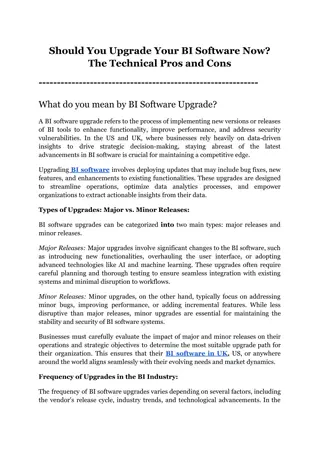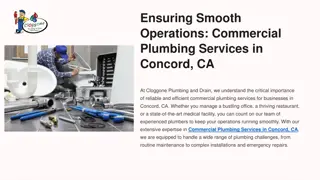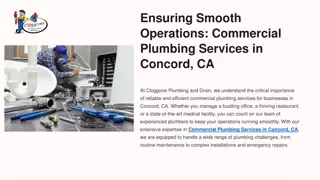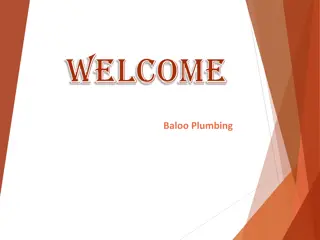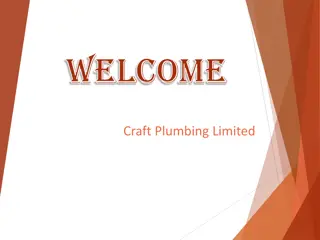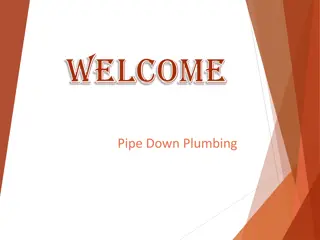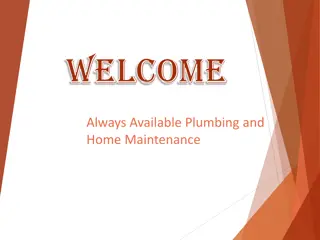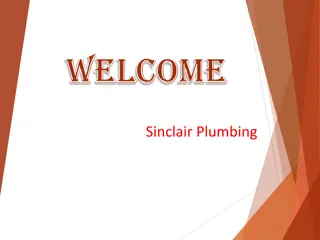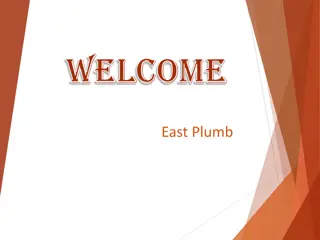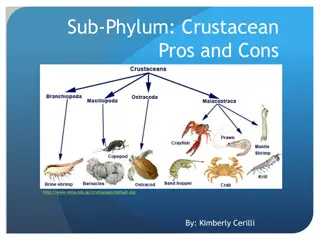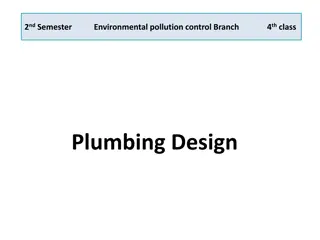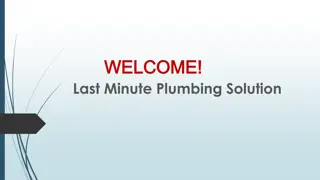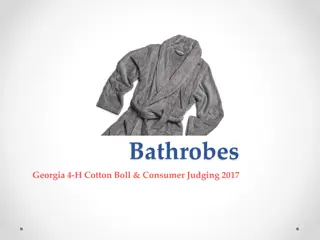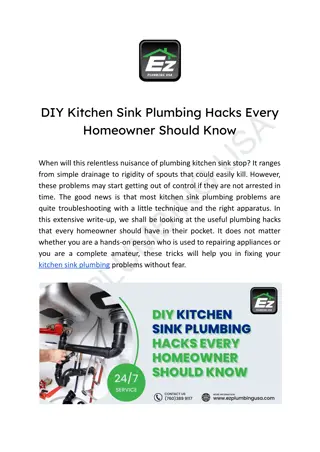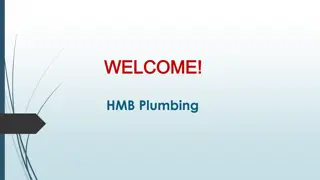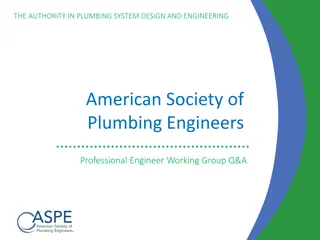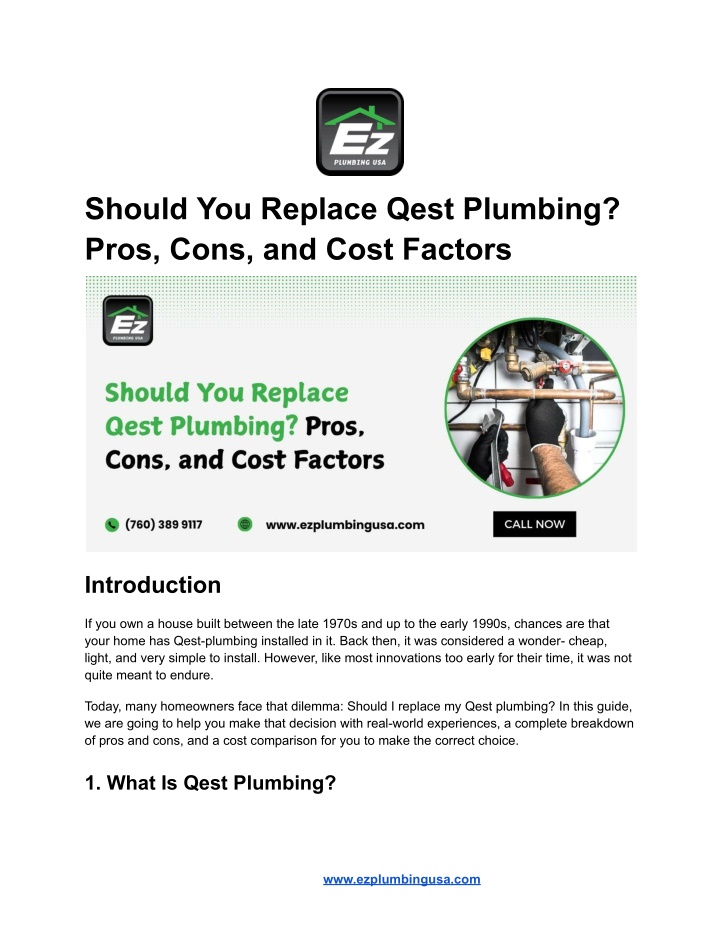
Should You Replace Qest Plumbing_ Pros, Cons, and Cost Factors
Wondering if it's time to replace your Qest plumbing system? This informative post explores the pros and cons of keeping or replacing Qest pipes, highlights potential risks, and breaks down the cost factors involved so you can make an informed decisi
Download Presentation

Please find below an Image/Link to download the presentation.
The content on the website is provided AS IS for your information and personal use only. It may not be sold, licensed, or shared on other websites without obtaining consent from the author. If you encounter any issues during the download, it is possible that the publisher has removed the file from their server.
You are allowed to download the files provided on this website for personal or commercial use, subject to the condition that they are used lawfully. All files are the property of their respective owners.
The content on the website is provided AS IS for your information and personal use only. It may not be sold, licensed, or shared on other websites without obtaining consent from the author.
E N D
Presentation Transcript
Should You Replace Qest Plumbing? Pros, Cons, and Cost Factors Introduction If you own a house built between the late 1970s and up to the early 1990s, chances are that your home has Qest-plumbing installed in it. Back then, it was considered a wonder- cheap, light, and very simple to install. However, like most innovations too early for their time, it was not quite meant to endure. Today, many homeowners face that dilemma: Should I replace my Qest plumbing? In this guide, we are going to help you make that decision with real-world experiences, a complete breakdown of pros and cons, and a cost comparison for you to make the correct choice. 1. What Is Qest Plumbing? www.ezplumbingusa.com
Qest plumbingrefers to a specific type of plastic pipe made from polybutylene, often labeled with brand names like Qest or Quest. These pipes were mainly gray, blue, or black and were used extensively in residential homes for both hot and cold water lines. 2. A Brief History of Qest Pipes Introduced in the 1970s, Qest pipes were seen as a modern alternative to copper due to their low cost and ease of installation. Builders and homeowners alike jumped on board. But by the mid-1990s, things took a turn. Several lawsuits and complaints surfaced, citing pipe failures, leaks, and water damage. Eventually, class-action lawsuits led to the discontinuation of polybutylene in new builds. 3. Why Was Qest So Popular? Think of Qest as the "fast food" of plumbing it was cheap, fast, and convenient, but not built for the long haul. Key reasons for its popularity included: Affordability compared to copper Lightweight and easy to install Corrosion-resistant (at least in theory) It seemed like a dream material until reality hit. 4. Common Problems With Qest Plumbing If your home still has Qest plumbing, you could be sitting on a ticking time bomb. Here are the most reported issues: Leaks caused by chemical reactions with chlorine in the water Cracking and brittleness as the pipes age Joint failures due to improper fittings or degradation Water pressure issues and poor flow rates Over time, even well-installed systems start to degrade, leading to frequent repairs and headaches. www.ezplumbingusa.com
5. Signs Your Qest Plumbing Might Be Failing Worried your plumbing is giving up? Keep an eye out for these warning signs: Unexplained water stains on walls or ceilings Mold growth due to hidden leaks Decreased water pressure Higher water bills Discolored water or unusual taste Like a slowly leaking tire, Qest plumbing doesn't fail all at once it gives warning signs. 6. The Hidden Risks of Leaving Qest In Place Leaving Qest plumbing in your home is like driving with worn-out brakes you might be okay for now, but disaster is waiting. Risks include: Water damage repairs costing thousands Mold remediation Higher home insurance premiums Lower property value or failed inspections Some insurers even refuse to cover homes with Qest plumbing, viewing them as high-risk. 7. Should You Replace Qest Plumbing? Here s the big question should you replace it? If your plumbing is nearing 30+ years old, yes, replacement is strongly recommended. Even if the pipes haven t failed yet, it's often just a matter of time. Peace of mind alone can be worth the investment. However, if you re planning to sell soon or don t want to open walls, there might be short-term workarounds. But be warned: delaying can be costly. www.ezplumbingusa.com
8. Benefits of Replacing Qest Plumbing Upgrading your system comes with major perks: Increased home value and resale appeal Fewer repairs and plumbing emergencies Better water pressure and flow Modern pipe materials that last decades Qualify for insurance discounts Think of it like replacing old wiring you won t see it, but you ll feel the difference daily. 9. Downsides of Replacing It Of course, it's not all roses. There are some drawbacks: Initial cost can be high (more on that later) Home disruption during the process Requires permits and inspections in many areas But these are usually short-term inconveniences for long-term safety. 10. Cost to Replace Qest Plumbing So, what s the damage? The average cost to replace Qest plumbing ranges from $3,000 to $10,000, depending on: Home size Pipe accessibility Chosen replacement material Regional labor costs www.ezplumbingusa.com
Homes with multiple stories or finished walls may fall on the higher end. 11. Types of Replacement Options Available If you're going to replace it, you ve got choices: PEX (Cross-linked Polyethylene) Flexible, cost-effective, and popular CPVC (Chlorinated Polyvinyl Chloride) Rigid, durable, better for hot water Copper Classic and long-lasting, but more expensive Most homeowners today opt for PEX due to its durability and ease of installation. 12. How Long Does the Replacement Take? The replacement process usually takes 3 to 7 days. Factors that affect duration include: Size of the plumbing system Accessibility (crawl spaces, basements, etc.) Whether patching and painting are needed after It s a relatively quick upgrade with a big impact. 13. Can You Replace It Partially? Yes, partial replacement is possible, especially if only one section is problematic. But it's like replacing just one tire on your car it works, but it's not ideal. If your budget is tight, you can prioritize sections that are leaking or exposed. 14. What to Expect During the Process Here s a simple breakdown of what the replacement might involve: 1. Inspection and planning 2. Shutting off water www.ezplumbingusa.com
3. Removing old Qest pipes 4. Installing new pipes 5. Restoring walls or ceilings 6. Final inspection and testing Some companies can even do it with minimal wall damage using specialized tools. 15. Final Thoughts & Long-Term Value Replacing Qest plumbing isn t just a repair it's a long-term investment in your home s safety, efficiency, and value. Yes, it costs money and takes effort, but the benefits far outweigh the risks. Think of it as swapping out a timebomb for a solid foundation. You ll sleep easier, your pipes will perform better, and your home will thank you. EZ Plumbing USAoffers 24/7 professional plumbing services across San Diego, Orange County, and Riverside. They specialize in leak detection, emergency repairs, and water heater services for homes and businesses. Contact us for more information. View Source- https://ez-plumbing-usa.medium.com/should-you-replace-qest-plumbing-pros-cons-and- cost-factors-d2bfe1cd5935 www.ezplumbingusa.com
Contact Us EZ Plumbing USA Address - 10320 Camino Santa Fe STE E, San Diego, CA 92121, United States Phone - +1 619-737-1916 Mail - sales@ezplumbingusa.com Web - www.ezplumbingusa.com www.ezplumbingusa.com


